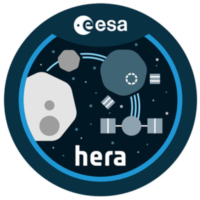About DART
NASA’s DART mission is the world’s first full-scale planetary defense mission led by the John Hopkins University/Applied Physics Lab. The mission is directly directed by the NASA Planetary Defense Coordination Office (PDCO, established in 2016). The DART spacecraft was launched by a Falcon 9 rocket on November 24, 2021. It collided with Dimorphos, a satellite of the asteroid Didymos, at a speed of about 6 km per second on September 26, 2022, at 23:15 UTC (8:14 JST on September 27).
——————————————————————

Figure 1: Schematic image of DART spacecraft (Credit: NASA/Johns Hopkins APL/Steve Gribben)
The main objective of DART is to demonstrate an orbital change of an asteroid caused by a spacecraft’s impact. The DART spacecraft will collide with the Dimorphos from the front side of the orbital direction of Dimorphos. It will decrease the orbital velocity of Dimorphos and so its orbital period. By observing this orbital period change from ground-based telescopes, we can measure the velocity change of Dimorphos due to the impact.
The amount of orbital change due to the collision is quantified by the momentum transfer enhancement efficiency, Beta. In the case of low-velocity impact (sticking), Beta=1. However, in the case of hypervelocity impact, Beta>1 because of the high-velocity ejecta generation. Since Beta depends on the physical properties of the target, such as porosity, it is crucial to measure Beta on the asteroid to prepare for future applications. The kinetic energy of the DART spacecraft (mass ~600 kg, velocity ~6 km/s) is about 2,700 times greater than that of Hayabusa2’s SCI (mass 2 kg, velocity 2 km/s). The DART collision is expected to shorten Dimorphos’ orbital period by a few minutes from 11.9 hours.

Figure 2: DART mission overview (Credit:NASA/Johns Hopkins APL/Steve Gribben)
The DART spacecraft will collide with Dimorphos using the optical navigation camera DRACO and the autonomous navigation system SMART Nav for autonomous guidance, navigation, and control (GNC). SMART Nav will start 4 hours before the impact and continue guiding until 2 minutes before the impact. Before the crash, DRACO will transmit the pre-collision topographic information of Didymos and Dimorphos to the Earth.
Impact phenomena after the impact will be observed by the Italian ASI/LICIACube, which will separate from the DART spacecraft 15 days before the impact. LICIACube will fly behind the DART spacecraft to observe the ejector plume immediately after the impact, the detailed topography of the Didymos system at the closest approach to the asteroid, and the topography of the non-collision hemisphere after passage.
Detailed observations of the crater formed by the DART spacecraft will be made by ESA’s Hera spacecraft five years later (2027). We are looking forward to see what fresh crater looks like and observing them with the Thermal infrared imager TIRI onboard Hera spacecraft!
Yuri Shimaki,
Hera JAPAN
September 12, 2022
